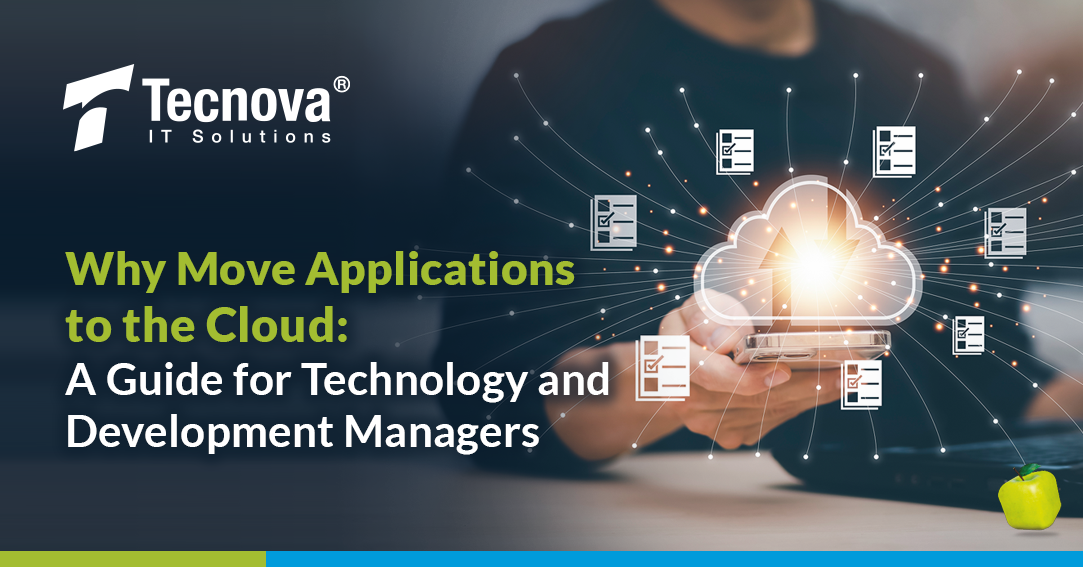Why Move Applications to the Cloud: A Guide for Technology and Development Managers

The migration of applications to the cloud has become a growing trend in the world of technology. As companies seek to improve efficiency and reduce costs, Technology and Development Managers are faced with the task of evaluating and deciding whether to make the leap to the cloud. In this article, we will address key questions related to the migration of applications and data to the cloud and the benefits this can bring.
1.- How to Move Apps to the Cloud?
The process of moving applications to the cloud involves transferring their applications and data from local infrastructures to cloud services. This can be done in different ways, such as rehosting, replatforming, or refactoring. Each approach has its own advantages and disadvantages, so it is crucial to choose the appropriate strategy for your specific needs.

2.- What Applications Can Be Stored in the Cloud?
Almost any type of application can be migrated to the cloud, from business and productivity applications to data analytics and business intelligence applications. However, it is essential to evaluate each application based on factors such as complexity, cloud compatibility, scalability, and security requirements.
3.- What are the Risks of Migrating Services to the Cloud?
Some risks associated with cloud migration include compatibility issues, performance disruptions, data loss, and security issues. It is essential to address these risks through thorough planning, selecting the right provider, and constant monitoring of performance and security in the cloud.
4.- What is Application Migration?
Application migration is the process of moving an application from its current infrastructure to a new one, usually to the cloud. This can include data transfer, modification of the application architecture, and adaptation to new environments and platforms.
5.- What is the Migration Process Like?
The migration process involves the following stages:
- Evaluation and planning: identifying candidate applications and data for migration, selecting the appropriate migration strategy, and developing a detailed plan.
- Preparation: making adjustments to applications and infrastructure, such as code optimization and network configuration.
- Migration: transferring applications and data to the cloud, monitoring the process, and resolving any issues that may arise.
- Testing and validation: ensuring that applications work correctly in the cloud and that performance and security requirements are met.
- Optimization: continuously adjusting and improving applications and infrastructure in the cloud.
6.- Why Migrate Data?
Data migration is essential to improving data efficiency, scalability, and accessibility. By moving data to the cloud, companies can take advantage of more flexible and cost-effective storage solutions, as well as more powerful data analytics and processing services.
7.- What is Data Migration to the Cloud?
Data migration to the cloud is the process of moving data stored in local systems or data centers to cloud storage services. This can include databases, files, images, and other types of data.
8.- What Benefits Are Gained by Migrating Applications and Data to the Cloud?
Moving applications and data to the cloud can provide several benefits, including:
- Cost reduction: by using cloud infrastructure, companies can save on expenses related to maintaining and updating local hardware and software.
- Scalability: the cloud allows organizations to easily scale their resources to meet fluctuating demands, resulting in greater efficiency and responsiveness.
- Flexibility: cloud services offer more flexible deployment and configuration options, allowing companies to quickly adapt to changing business needs.
- Accessibility: cloud-based applications and data are available from anywhere and at any time, making remote work and team collaboration easier.
- Disaster recovery: cloud service providers often have redundancy and backup measures in place to ensure data availability and recovery in case of failures or disasters.
Conclusion
The migration of applications and data to the cloud can offer a wide range of benefits for companies and their Technology and Development Managers. By addressing key questions and following a structured approach to migration, organizations can make the most of the advantages of the cloud and improve their competitiveness in the market.
In summary, migrating applications and data to the cloud can be a complex process, but it can also provide significant benefits in terms of cost reduction, scalability, flexibility, accessibility, and disaster recovery. Technology and Development Managers need to evaluate their specific needs and choose the appropriate migration strategy to achieve these benefits while addressing potential risks. With careful planning, preparation, migration, testing, and optimization, companies can successfully move their applications and data to the cloud and leverage the power of cloud services to enhance their business operations.
More information:








